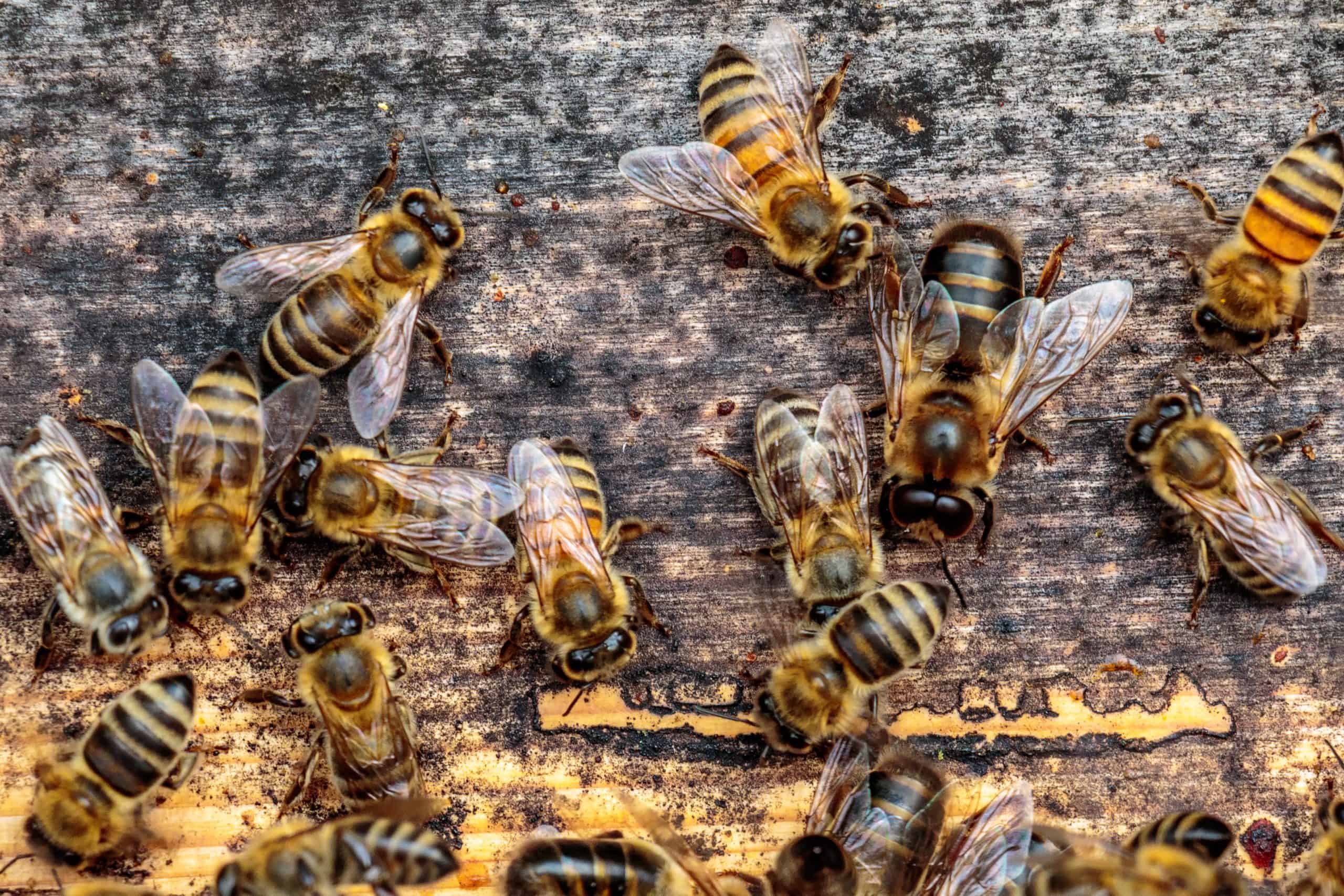For most people, when they hear the word ‘bees,’ being stung is the first thing that comes to their mind. Well, bees are more than just insects with a stinger on their back.
They are the world’s greatest pollinators and play a pivotal role in keeping the ecosystem thriving. Very few people realize the importance of bees.
As tenants of planet earth, it is our duty to keep check of all the things that benefit the environment. With that said, it is essential to understand bees, the types of bees found in nature, their behavior, how to identify them, and more.
If you don’t know, bees help with the pollination of 1/3rd of the food we eat. Bees are a significant part of the global economy, and without them, we would vanish.
From honey to wax and helping with cross-pollination, bees are prominent to the human race. However, the bee population is on the decline, thanks to the human intervention with Mother Nature.
Thus, it is essential to do everything in our power to keep the bee population thriving. To accomplish this, first, we need to understand bees. From the types of bees to what they do, where they live, how to classify them, and more, a lot of research is needed.
As a student or an enthusiast, if bees intrigue you, then this post will help you in understanding different types of bees and their characteristics.
Let’s get started.
Table of Contents
Types of Bees
There are over 20,000 known species of bees, and Antarctica is the only continent with no bee population. In North America alone, there are about 4000 species of bees.
Types of bees, regardless of location, usually fall into two major classifications – social bees and solitary bees.
Social Bees
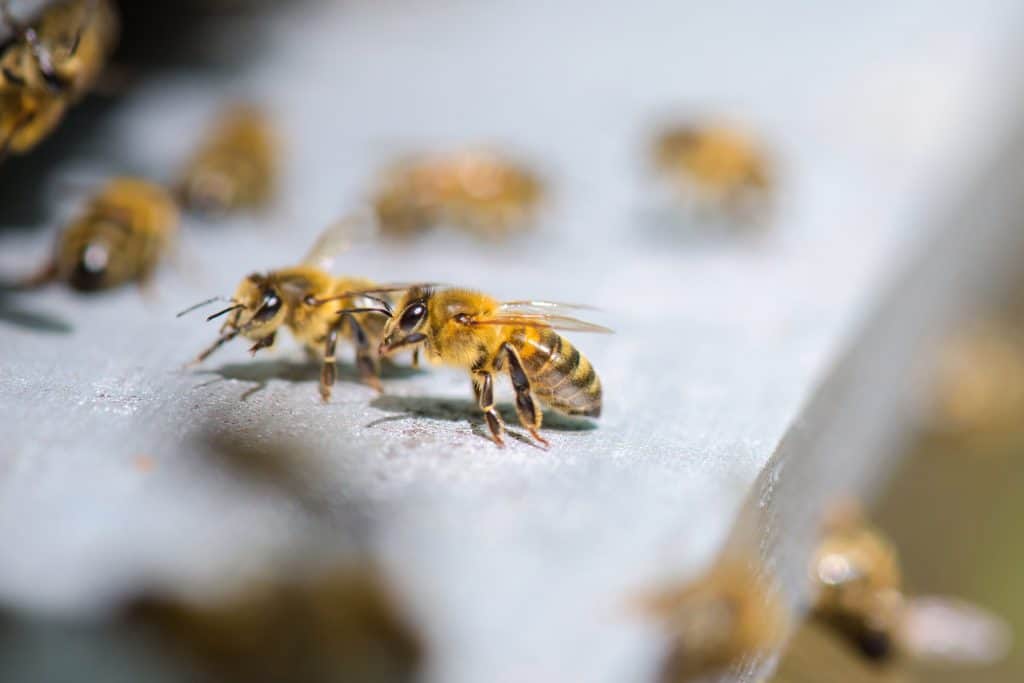
Social bees are what many people think of when they hear the term ‘bee.’ For starters, social bees are what give the world delicious honey and useful wax.
Social bees, as the name suggests, live in a group, creating large colonies and gatherings. Social bee hives may contain as many as 40,000 bees, with each bee being designated with a specific task to keep the hive up and running. These bees have many jobs like collecting nectar and pollen, producing honey, nourishing the larvae, and producing combs.
Social bees are docile, meaning they will only sting if they feel their hive is under threat. And since their stinger is barbed, it detaches from their body after they sting, resulting in their death. In short, social bees die after they sting.
How well the hive is functioning totally relies on the health of the queen bee and her ability to lay eggs. A healthy queen bee can lay 2000 eggs per day.
There are basically three main types of social bees. They are considered overachievers due to the effort they put into creating everything from honey to wax and a community to live within.
The social bees are most likely seen generating hives and functioning together to create a community.
1. Bumble Bees

Bumblebees are hairy pollinators known for their size. They are big bees that pollinate all kinds of flowers and plants in the wild and garden.
Their proficiency in pollination comes with the help of their big, bulky, furry coats. Bumblebees are quite large in size, and they play a significant role in terms of pollination, thanks to their ability to enthusiastically leech to plants and flowers to find nectar and pollen.
Sadly, over one-fifth of bumble bee population have been lost due to climate change, pollution, excessive use of pesticide, and more. Natural predators, as well as competition from other bee species, is another struggle.
2. Honey Bees
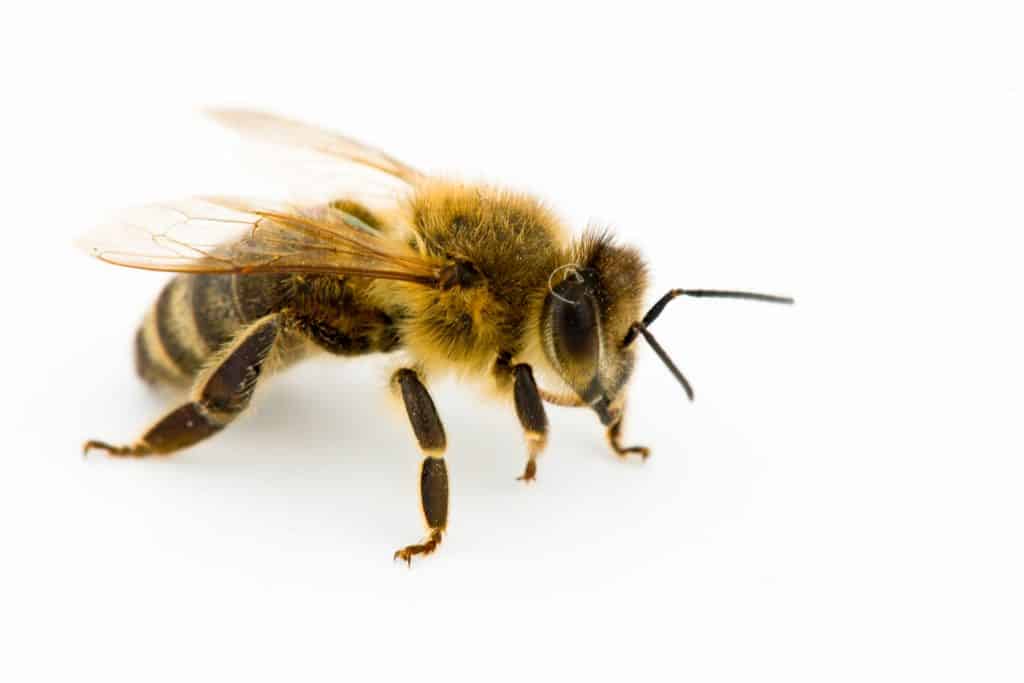
Honey bees are the most popular of all bee species. They are social bees and considered the top pollinators. They play a vital role in our ecosystem. A single honey bee colony may include as much as 80,000 individual bees, that live, work, and produce honey together.
They are smaller in size as compared to the bumble bees and don’t boast the hairy furry appearance. As compared to the bumble bees, honey bees have narrower but lengthier figures.
A honey bee hive is one of the most interesting aspects to look into. Honey bees have roles designated to themselves.
If you ask what the different kinds of bees are in a honey bee hive, the answer would be three. They live together in a well-organized group. Each colony of honey bee consists of several thousand worker bees, a few hundred drone bees, and one queen bee.
Let’s discuss them in detail.
- Queen Bees
There are three main reasons why new queens are started in the hive.
The first reason is the hive is completely plugged out, meaning it is full of honey, and thus, the existing queen doesn’t have more rooms to lay eggs.
As a result, the bees begin the swarming process, where they construct swarm cells for new queens. In the meantime, the new queens hang from the bottom of the frames. The amount of food given to the old queen is also cut down, ensuring that she doesn’t weigh much that she is able to fly.
Once the new queen cells are ready, the swarm leaves the hive with the old queen. Enough bees are left behind in the hive to care for the brood and the new queen cells.
The second reason is the replacement of the old and inferior queen bee by the new queen bees. This phase is called ‘supersedure.’
Queen bees are known for emitting a pheromone that attracts other bees. When a queen bee gets older, the production of pheromone also diminishes. This tells the other bees that their current queen isn’t capable of laying more eggs.
So, they replace her with the new queen. They start making new queen cells and a few supersedure cells where the old queen will be kept. Once they find a new queen, the bees ‘ball’ the former queen, huddling tightly around her. This clustering results in the queen’s body getting overheated that ultimately leads to her death.
The third reason is for appointing a new queen in an emergency situation. Sometimes, the queen can be accidentally removed or killed. Therefore, the bees have to select younger worker larvae for producing emergency queens.
These emergency queens are quite smaller as they are raised in normal worker cells that hang vertically on the surface of the comb as compared to the queens that are produced for supersedure or swarming.
When a young virgin queen arises from the queen cell, she will explore the hive looking for all the other virgin young queens. She will kill all of them. She will open the queen cells and sting the queens inside.
In case if other queen bees have already emerged from the queen cells, she will find them and fight with them until there is only one left. What this means is that the one who is left alive is the strongest queen.
Other bees won’t prevent the queen bees from fighting with each other or killing the queen in the cells, except in one case. This is when they are swarming. In the swarming mode, the bees will prevent the virgin bees from fighting.
A week after the new queen rise to power, she will leave the hive in search of a drone congregation area. This is where she will look for drone bees for mating. A drone congregation area is something where drone bees from different hives come to mate.
Mating with different drone bees ensures that diverse genetics are disbursed around to different hives. In case of bad weather, the queen bee isn’t able to leave the hive and mate. As a result, the queen bee will turn into a drone layer, meaning she will only produce drones. This causes the downfall of the colony.
After successfully mating with the drone bees, the queen will return to her hive. She starts laying eggs within 2-3 days after mating. It is easy to identify a queen bee due to her elongated abdomen.
Queen bees lay eggs depending on the size of the cell. If the cells are large, the queen will lay unfertilized eggs that turn into drone bees. And if the cells are small, the queen will lay fertilized eggs.
The peak season for a queen bee to lay eggs is early summer. She can lay up to 2000 eggs in a day. And as the weather turns colder, the egg production gets low. A healthy queen bee can produce up to 250,000 eggs in her lifetime, which may last 1-2 years.
While a worker bee and queen bee start out from the same fertilized eggs, there are some dissimilarities between the two. The worker bee is only able to produce unfertilized eggs, whereas the queen bee can produce both fertilized and unfertilized eggs.
A queen has a curved and elongated stinger, which is retractable, and she doesn’t boast any functional wax glands. A worker bee will die within a couple of weeks.
- Drone Bees
Drone bees are the male bees that thrive only during the summer and early fall. Their role in the beehive is to mate with the queen bee.
Drone bees rely on worker bees for food. They don’t have any wax glands, pollen baskets, or even stingers. They have no purpose in the hive other than mating. Drone bees fly out and mate with queen bees.
However, they cover the brood to keep it warm, allowing the worker bees to go out and forage for more pollen and nectar. Once the temperature turns cold in the fall, the drone bees will be forced to leave the hive. As a result, they will starve and die.
The worker bees may force the drone bees to leave the hive during lean times as well when there is a shortage of food.
- Worker Bees
The worker bees are the most hardworking bees in a hive. They are the female bees responsible for all the process that takes place inside the hive.
This includes cleaning the cells, preparing the cells for the queen to lay eggs, caring and feeding the eggs and larvae, building new combs, packing pollen and nectar into the new cells, capping the comb after it is filled with nectar, circulating the nectar to vaporize excess moisture, repairing the hive, and foraging throughout the day collecting pollen and nectar.
Older worker bees are designated with the collection of pollen, nectar, water, and propolis as required by the hive.
Some worker bees work as guards that keep the hive protected from intruders. If they sense any threat approaching the beehive, they will emit pheromone, warning all the bees inside the hive of the danger.
3. Killer Bees
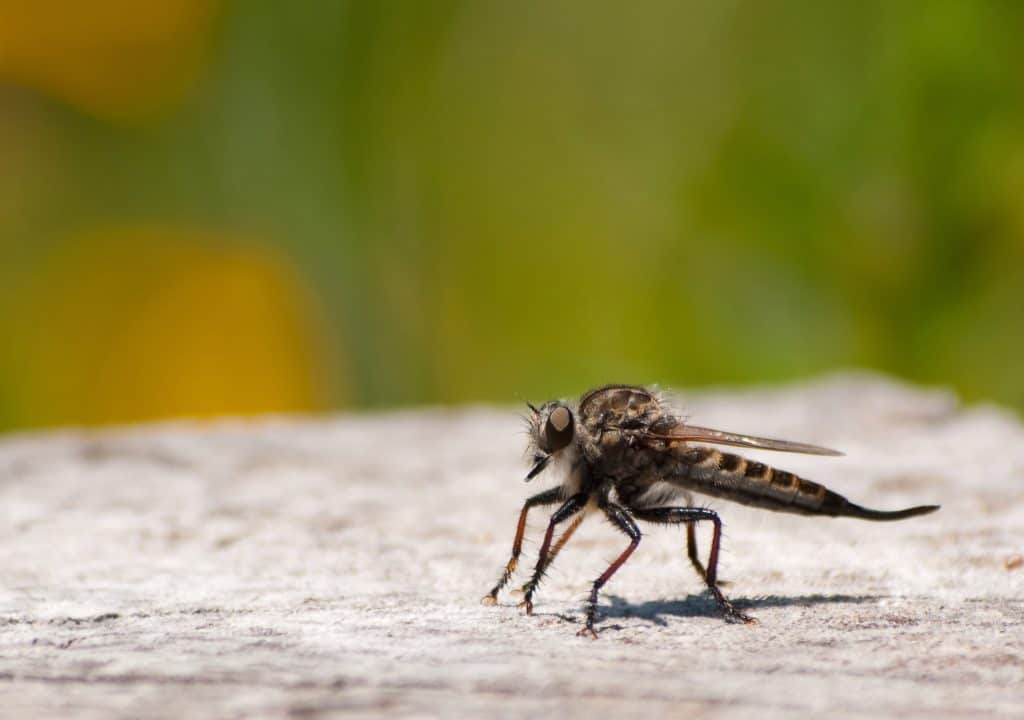
Killer bees, also known as Africanized bees are a new cross-bred that were lab-produced. These bees were formed with the honey bees.
However, they ran away from a lab in South America. Killer bees are known for their wicked temperament. They will attack and chase down anyone that comes near their hive.
While they are dangerous of all the bees, they are smaller than bumble bees and honey bees, and not lethal as the name suggest.
4. Solitary Bees
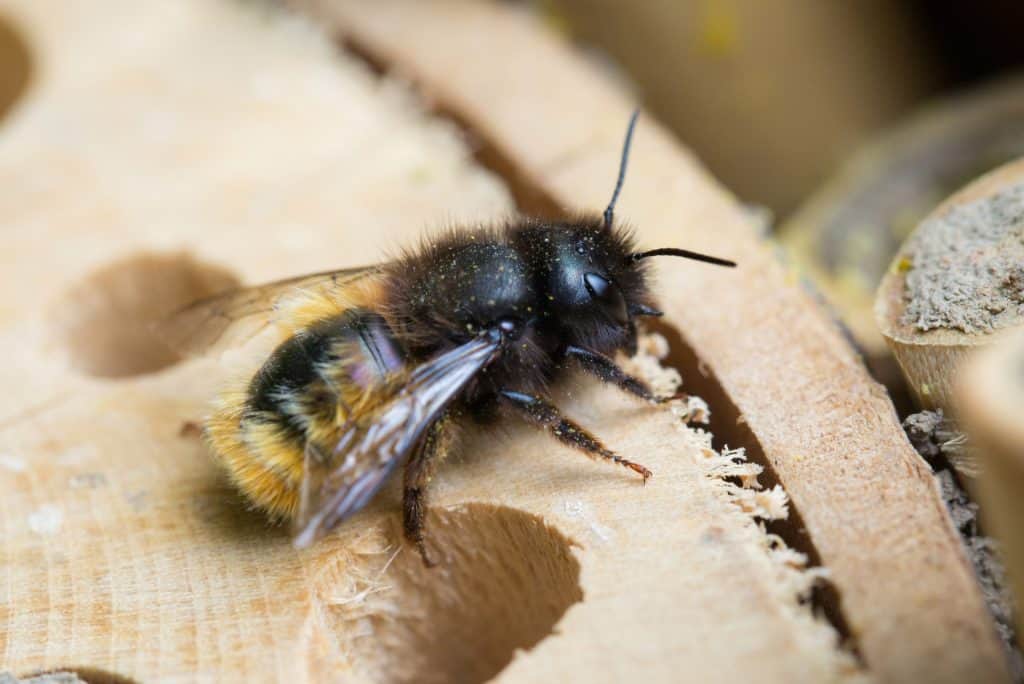
Solitary bees are often overlooked as they are not as hairy and furry as honey bees or other bees in the social group. They vary considerably in appearance and size, and as the name suggests, they do not live in colonies.
They are excellent pollinators, 100 times better than honey bees. They are known to pollinate fruits, trees, and plants more efficiently. This ensures that our plant communities are productive and healthy.
Solitary bees are heavy foragers. Depending on the weather, they can travel miles in search of pollen and nectar.
Farmers, in particular, attract solitary bees to their farms by providing them nesting options, safety, and food source. In return, solitary bees help with the pollination of the crops and vegetation.
There are several different types of solitary bees. Let’s discuss each one of them briefly.
5. Mason Bees
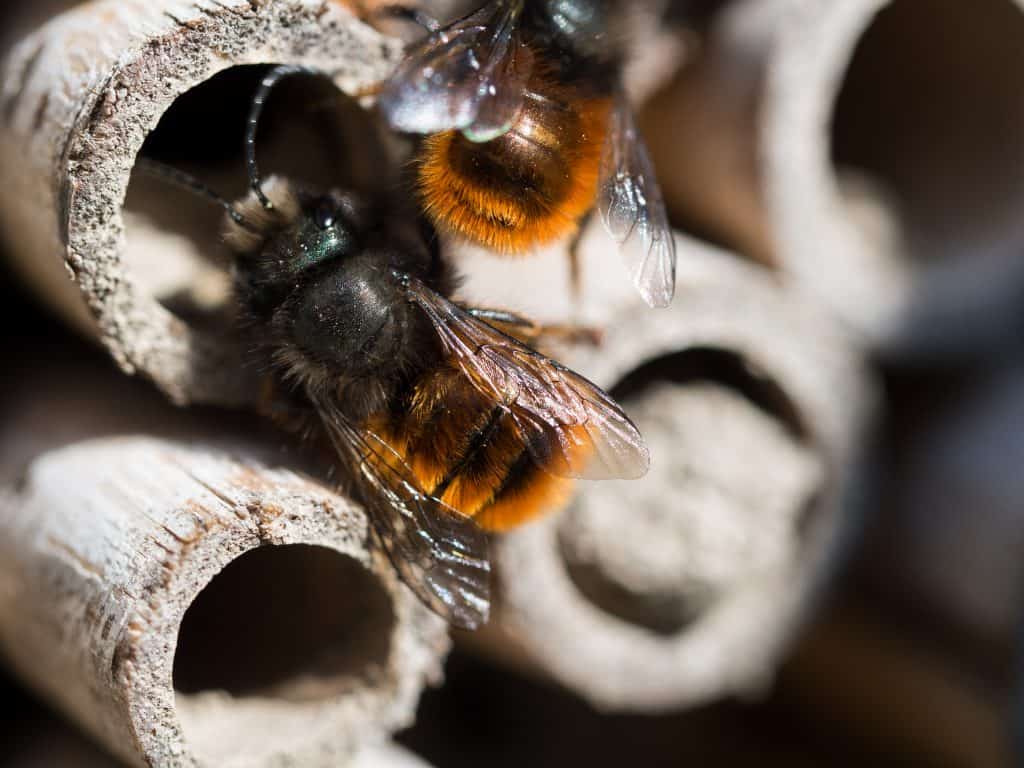
Mason bees are considered the world’s greatest pollinators.
They collect more pollen than nectar, resulting in a 99% successful pollination as compared to honey bees’ 5% rate.
On a given day, mason bees can visit as much as 2000 flowers in a day. They prefer nesting inside holes and cracks in the walls. They are peace-loving insects.
6. Leafcutter Bees
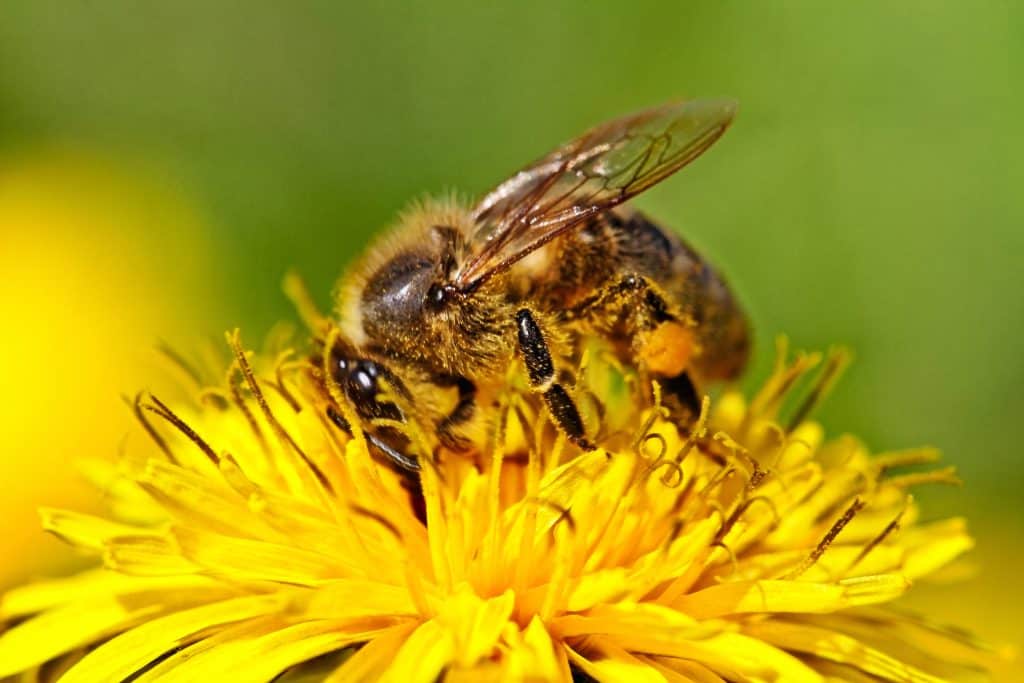
Leafcutter bees are solitary bees and are similar to mason bees. They can measure up to 18 millimeters and look dark. They also prefer collecting pollen more than nectar and nest inside small cracks of decaying wood.
7. Mining Bees
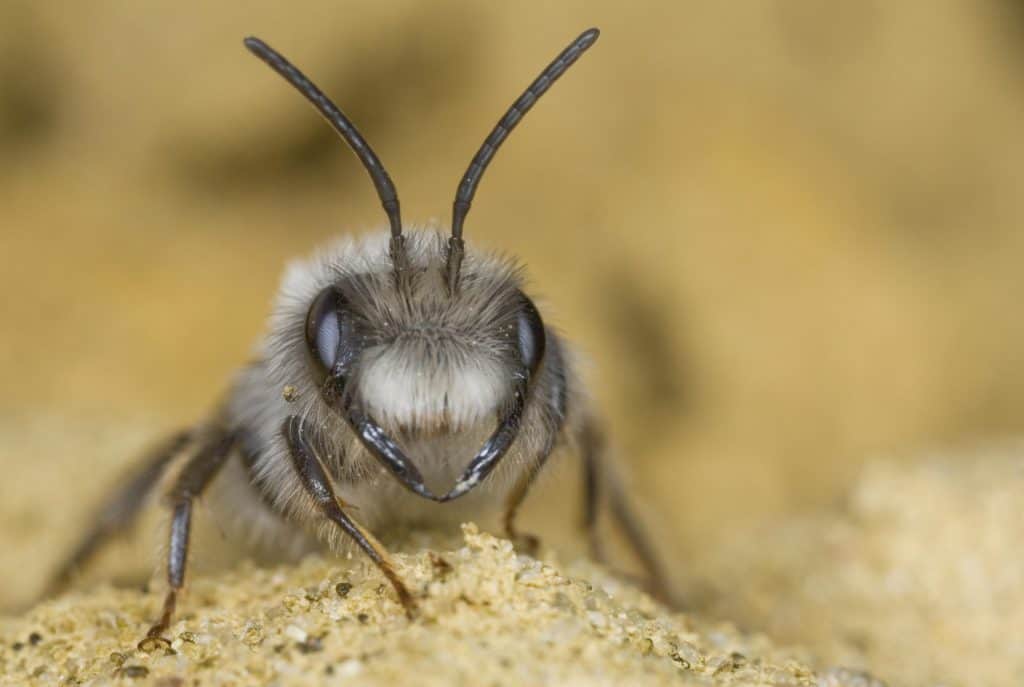
Mining bees are known for digging tunnels to make their nests. The underground tunnels somewhat look like housing units where it stores its eggs and larvae. While they sting, humans don’t face any threat from them.
8. Digger Bees
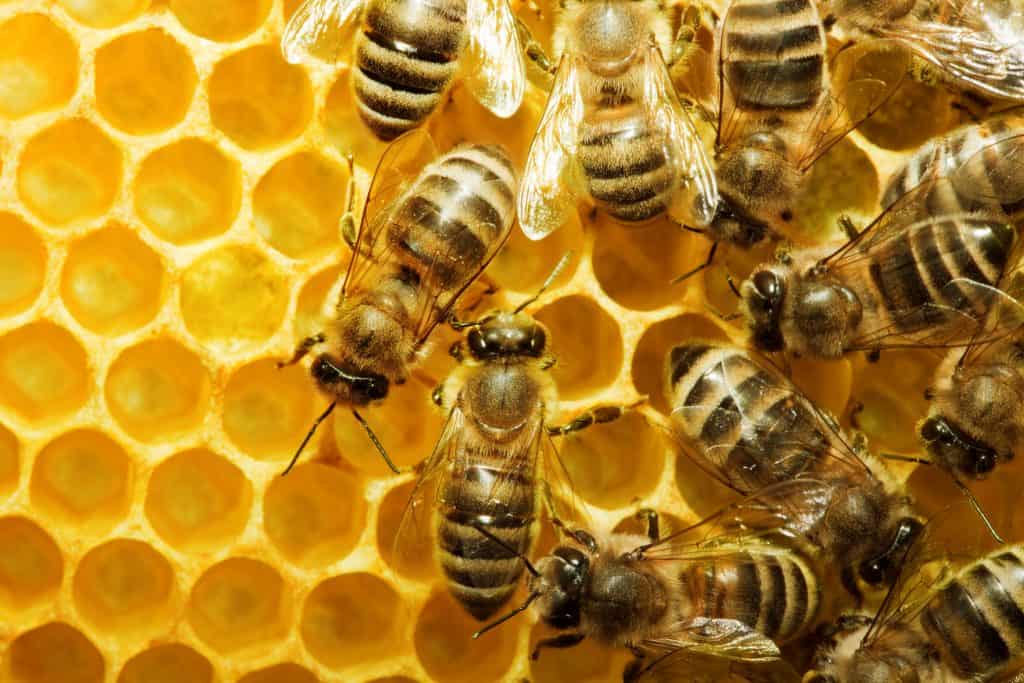
Similar to mining bees, digger bees prefer making holes in the ground to create compartments. They use the compartments for storing food, eggs, and larvae. They can grow up to 15 millimeters in length.
9. Carpenter Bees
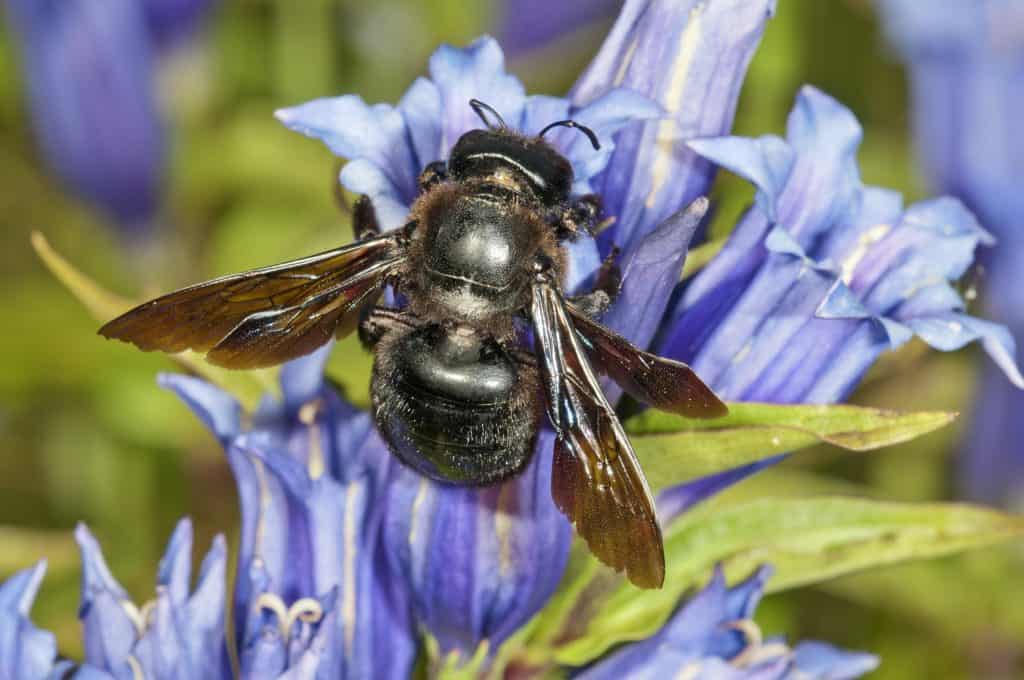
Carpenter bees are probably the most popular types of solitary bees due to their interaction with humans.
Carpenter bees, as the name suggests, love creating their nests inside the wood. So, they are common problems in houses with wooden doors and panels. They look a lot like bumble bees.
10. Yellow-Faced Bees
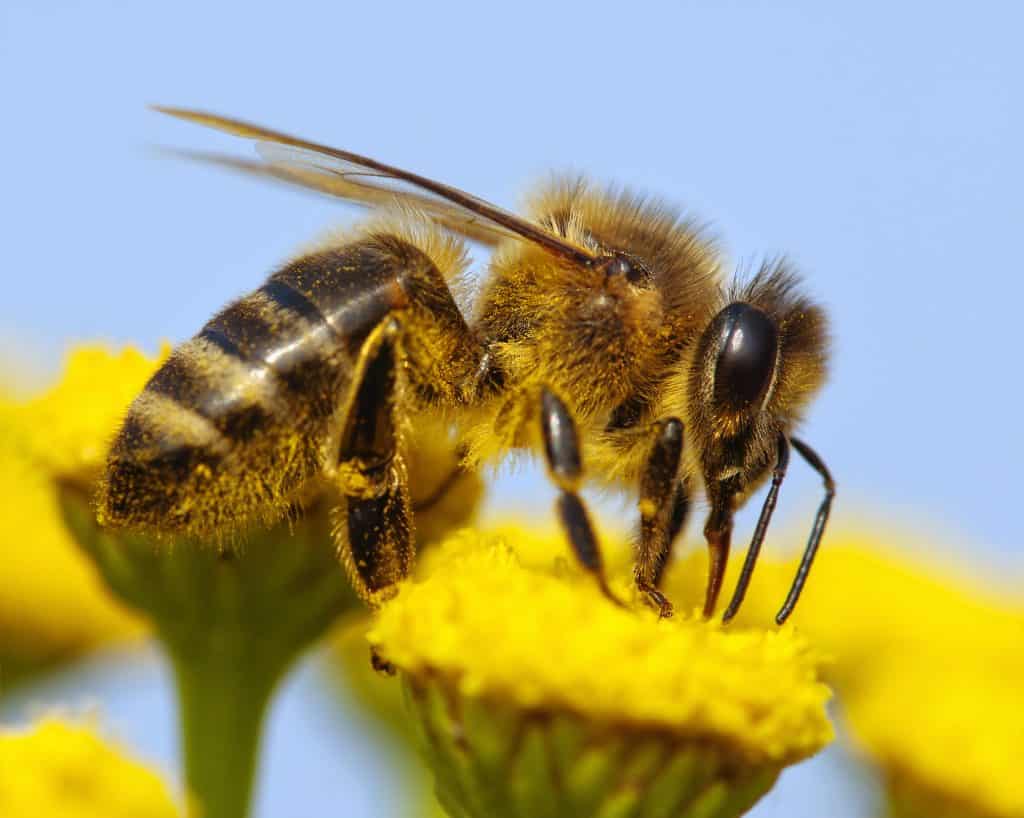
Yellow-faced bees are one of the smallest in the bee species. While they look vicious, these bees are much more docile. They grow up to 6 millimeters in length.
They got their name due to their yellow-colored faces. However, some varieties of these bees have white-colored faces. These bees are known for their extravagant mating rituals.
11. Plaster Bees
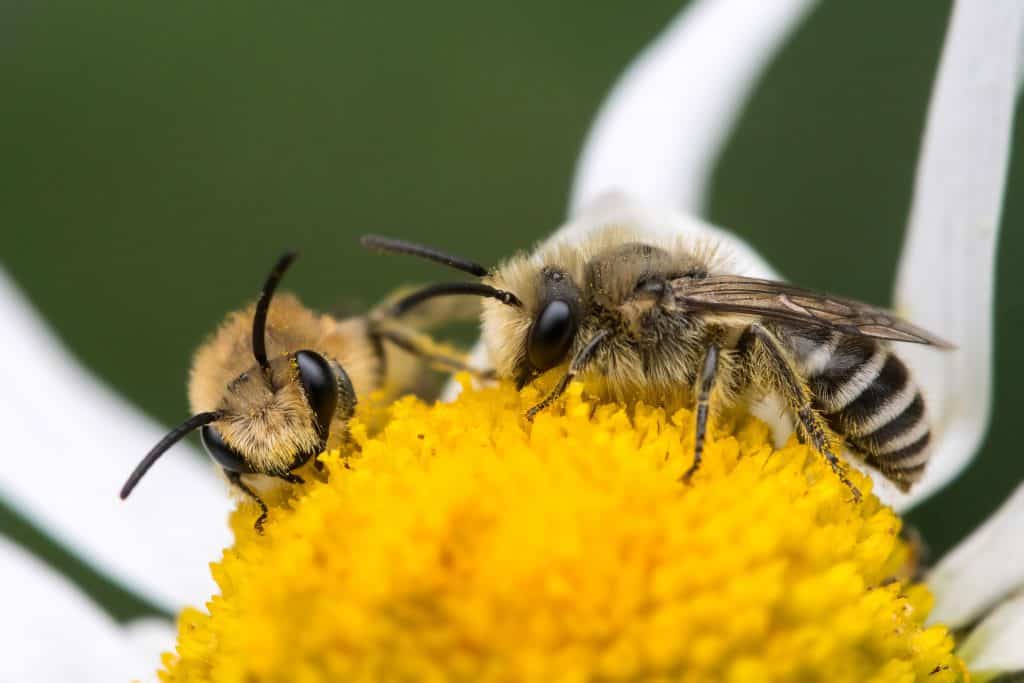
Plaster bees are hairy-looking bees that prefer nesting underground. However, if they find feasible cracks in bricks or stone, they will make their nests in them.
The reason they are called plaster bees is that they plaster the walls of their nests using a discharge that looks transparent and lustrous after drying.
12. Sweat Bees
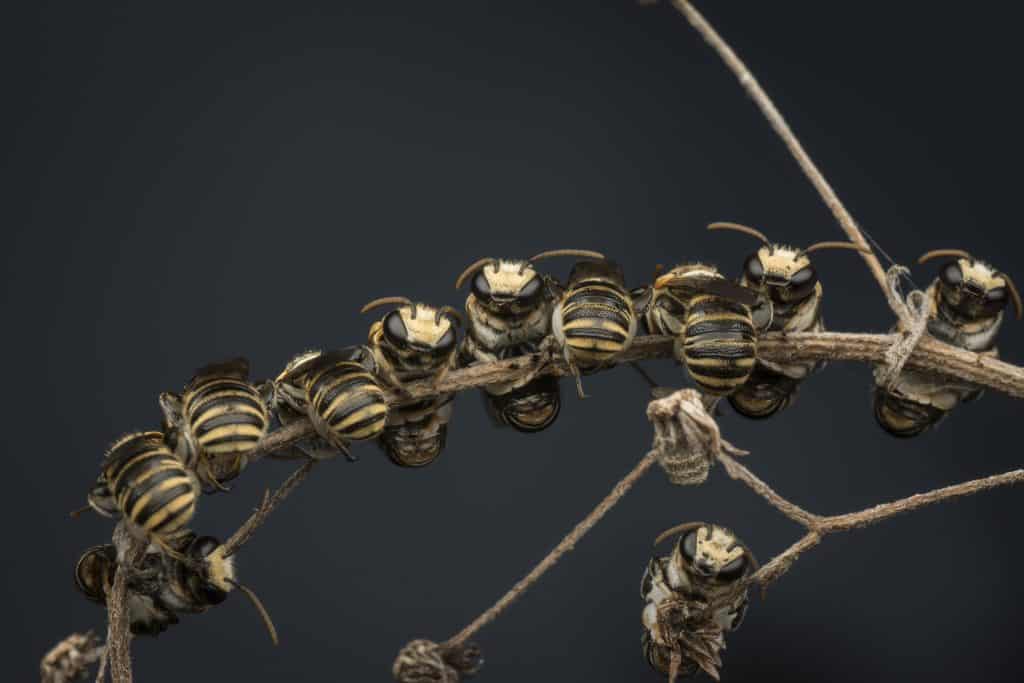
Sweat bees the smallest of all bee species, measuring only 3 millimeters. Despite their size, they are brutal stingers, and you may want to avoid coming in contact with one.
They have a glossy green texture that keeps them safe from predators.
Frequently Asked Questions
Now that you have understood different types of bees, it is time that you look at some frequently asked questions on bees that will help you improve your bee knowledge.
- What are the small bees called?
There are different types of bees that are classified based on their body structure and characteristics. While there is no particular name given to small bees, there are certain bee species that can be considered small. That is, most bees range from 10-18 millimeters in length like honey bees, bumblebees, mason bees, etc. The small ones like sweat bees and yellow-faced bees only range from 3-6 millimeters in length.
- Which bees sting and which don’t?
In most cases, the female bees are capable of stinging, while the male bees aren’t equipped with stingers. They only sting if you provoke them or pose a threat to their colony.
- Are bees insects?
Yes, bees are flying insects that are closely related to ants and wasps.
- Where do bees live?
Bees, depending on their type and species, live differently. Social bees like honey bees build nests under the edges of the tree branch. Solitary bees like mason bees look for holes and cracks inside walls and wood pieces to make their nest.
- What do bees do?
Bees help with the pollination of plants, fruits, flowers, etc. that helps us get one-third of the food we eat. Other than that, social bees like honey bees make honey out of nectar collected from flowers.
- Do honey bees sting?
If they feel threatened, honey bees will do anything to protect their hive and queen. So, they won’t find stinging any problem despite the fact that they die after stinging.
- Do all bees make honey?
Only social bees make honey. They visit hundreds and thousands of flowers daily to collect nectar, which is later processed into honey by the worker bees.
- How many legs does a bumblebee have?
A bumblebee has three pairs of legs, meaning they have six legs in total.
Conclusion
Now you know which are stinging bees, carpenter bees, and can distinguish between bumble bees and honey bees.
Take a look at this list of articles on bees to learn more about beekeeping and honey.
